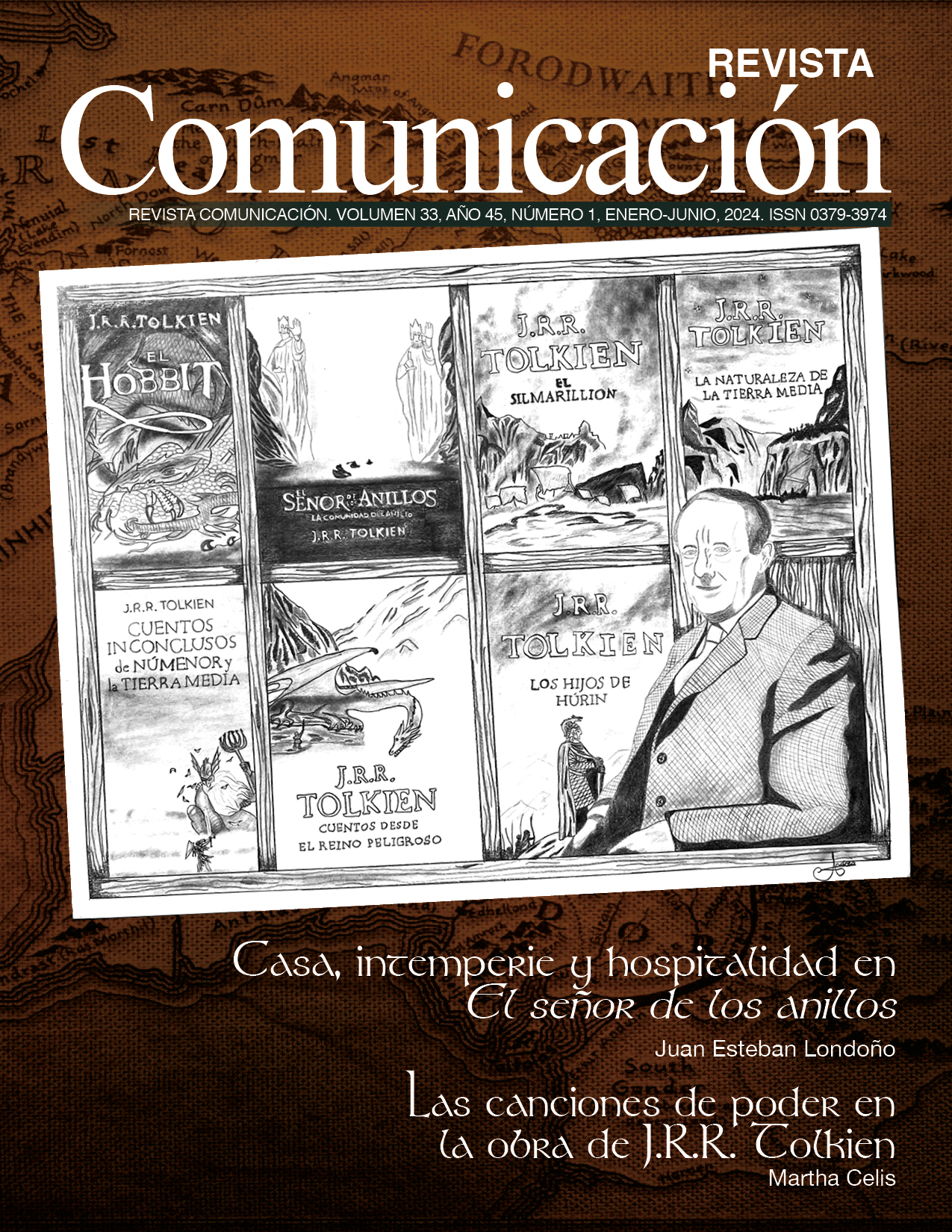SOOT a Case Study on Women and Video Games
Main Article Content
Abstract
The way in which certain groups are represented in the audiovisual media is important. Video games, as an immersive multimedia
resource, are not exempt from gender stereotypes. The purpose of this article is to describe the methodology to create characters for the Costa Rican video game SOOT. To do this, a methodological process of compilation and theory on the subject in the narrative area was followed. Then, using examples from the video game, the design methodology is described, a mixture derived from Ellis and Bratman’s models. In addition, the archetypes of the female characters, the game, and the hero’s journey among the main characters are explored from a narrative perspective. It is important to explore more this topic with other case studies to improve the representation not only of women but also of other minorities in video games.
Article Details
This work is licensed under a Deed - Atribución/Reconocimiento-NoComercial-SinDerivados 4.0 Internacional - Creative Commons.
Política de acceso abierto
Esta revista provee acceso libre inmediato a su contenido bajo el principio de que hacer disponible gratuitamente investigación al público apoya a un mayor intercambio de conocimiento global.
Ser una revista de acceso abierto, implica que todo el contenido es de libre acceso y sin costo alguno para el usuario o usuaria, o institución. Las personas usuarias pueden leer, descargar, copiar, distribuir, imprimir y buscar los artículos en esta revista sin pedir permiso previo del editor o el autor con fines educativos y no de lucro.
La única limitación de la reproducción y la distribución, y el único papel de los derechos de autor en este ámbito, debe ser dar a los autores el control sobre la integridad de su trabajo y el derecho a ser debidamente reconocidos y citados. (Budapest Open Access Iniciative)
LICENCIAMIENTO Y PROTECCIÓN INTELECTUAL
Todos los artículos publicados, están protegidos con una licencia Creative Commons 4.0 (Deed - Atribución/Reconocimiento-NoComercial-SinDerivados 4.0 Internacional - Creative Commons) de Costa Rica. Consulte esta licencia en: https://creativecommons.org/licenses/by-nc-nd/4.0/deed.es
Las licencias constituyen un complemento al derecho de autor tradicional, en los siguientes términos:
- Se impide la obra derivada (es decir, no se puede alterar, transformar ni ampliar el documento).
b. Siempre debe reconocerse la autoría del documento referido.
c. Ningún documento publicado en la Revista Comunicación, puede tener fines comerciales de ninguna naturaleza.
Mediante estas licencias, la revista garantiza al autor que su obra está protegida legalmente, tanto bajo la legislación nacional como internacional. Por tal motivo, cuando sea demostrada la alteración, la modificación o el plagio parcial o total de una de las publicaciones de esta revista, la infracción será sometida a arbitraje internacional en tanto que se están violentando las normas de publicación de quienes participan en la Revista y la Revista misma. La institución afiliada a Creative Commons para la verificación en caso de daños y para la protección de dichos productos es el Instituto Tecnológico de Costa Rica, mediante la Editorial Tecnológica y la Vicerrectoría de Investigación.
References
Bratman, M. (1987). Intention, plans, and practical reason. Cambridge: Cambridge, MA: Harvard University Press.
Costikyan, G. (2002). I have no words and I must design toward a critical vocabulary for games. Memorias de la Conferencia Computer Games and Digital Cultures. Universidad de Tampere. Tampere, Finlandia. Recuperado de: http://www.costik.com/nowords2002.pdf.
Crookall, D. (2000). Editorial. Simulation & gaming, 31(1), 5-21.
Ellis, A. (1957). Rational Psychotherapy and Individual Psychology. Journal of Individual Psychology, 13(1), pp. 38-44.
Ellis, A. (2014). The revised ABCs of Rational Emotive Therapy (RET). En J. Zeig (Ed.), The Evolution Of Psychotherapy: The Second Conference (pp.79-92). New York: Routledge.
Faber, M., A. y Mayer, J. D. (2009). Resonance to archetypes in media: There’s some accounting for taste. Journal of Research in Personality, 43(3),307-322. Recuperado de https://doi.org/10.1016/j.jrp.2008.11.003.
Falstein, N. (10 de noviembre de 2004). Natural Funativity [Artículo en un blog]. GameDeveloper.com. Recuperado de: https://www.gamedeveloper.com/ design/natural-funativity
Fernández-Vara, C. (2014). La problemática representación de la mujer en los videojuegos y su relación con la industria. Revista de Estudios de Juventud, (106), 93-08.
Greimas, A.J. (1987). Semántica estructural: investigación metodológica. Madrid: Editorial Gredos.
Jung, C.G. (1970). Arquetipos e inconsciente colectivo. Paidós. Barcelona, España.
Hunicke, R.; LeBlanc, M.; Zubek, R. (2004). MDA Framework: A formal approach to game design and game research. Memorias del taller Challenges in Game AI de la Conferencia Nacional en Inteligencia Artificial No. 19 (IAAA ‘04), San José, California. EE. UU. Recuperado de: https://users.cs.northwestern.edu/~hunicke/MDA.pdf.
Huutoniemi, K., Thompson, J., Brunn, H. y Hukinnen, J. (2010). Analyzing interdisciplinarity: Typology and indicators. Research Policy, 39(1), 79-88. Recuperado de https://doi.org/10.1016/j.respol.2009.09.011.
Lambert, Y. (2023). Las narrativas audiovisuales en el diseño de videojuegos, aproximaciones teóricas, un acercamiento a sus particularidades. ÑAWI. 7 (1). pp. 231-258. ISSN 2528-7966.
LeBlanc, M. (2002). Game Design and Tuning Workshop: Orientation [Diapositiva de Power Point]. Game Developers Conference. Recuperado de: http://algorithmancy.8kindsoffun.com.
Lindley, C. (2005). Story and narrative structures in computer games. En B. Bushoff (Ed.), Developing Interactive Narrative Content (pp. 1-27). Munich: High Text Verlag. Recuperado de: https://few.vu.nl/~eliens/ct/local/story/sagasnetLindleyReprint.pdf.
Martínez Toledo, Y. y Tristán Meoño, M. F. (2022). El foco en ellas: experiencias de mujeres en la industria audiovisual publicitaria costarricense. En Y. Martínez (Ed.), Miradas cruzadas de la publicidad y el género desde la historia, el derecho y la comunicación (pp. 231-269). Recuperado de https://cicom. ucr.ac.cr/wp-content/uploads/2023/02/E-book-Miradas- cruzadas-de-la-publicidad-y-el-genero_compressed. pdf.
Mora-Zamora, R., Brenes-Villalobos, E. y Durán, F. (2020). 5-Part Model: A Formal Approach to Designing Mechanics. CLEI Electronic Journal, 23(2). doi: https://doi.org/10.19153/cleiej.23.2.1.
Mora-Zamora, R., Durán, F., Céspedes-Vindas, A., Elizondo- Rojas, L. A., y Dittel-Mora, B. (2022). SOOT [Videojuego]. Ceiba Software & Arts. Recuperado de https://store.steampowered.com/app/1929460/SOOT/.
Mora-Zamora, R., Durán, F., Céspedes-Vindas, A., Elizondo-Rojas, L. y Dittel-Mora, B. (2022-2). SOOT [Página web]. Ceiba Software & Arts. Recuperado de http://www.ceibasoft.net/soot/.
Perry, A. (2012). Women and Video Games: Pigeonholing the Past. Scripps Senior Theses, 135. Recuperado de http://scholarship.claremont.edu/scripps_theses/ 135.
Sahin, S. (2017). Reflections from a Collectivist Culture: A Qualitative Analysis on Archetypal Characters. International Journal of Innovative Research and Deveploment, 6(5),. Recuperado de https://doi.org/10.24940/ijird/2017/v6/i5/MAY17048.

